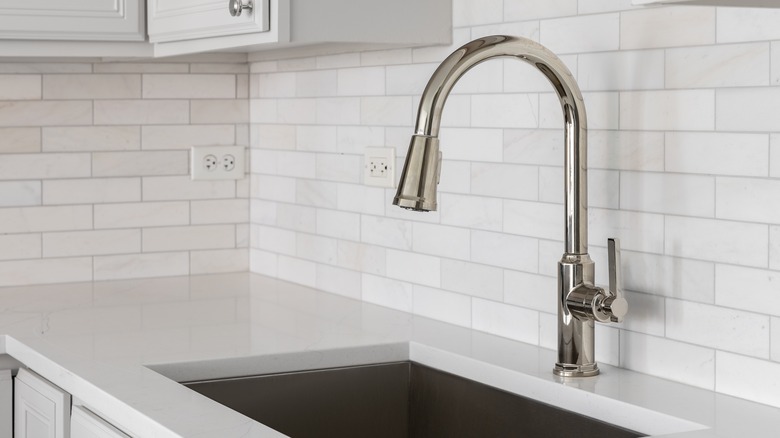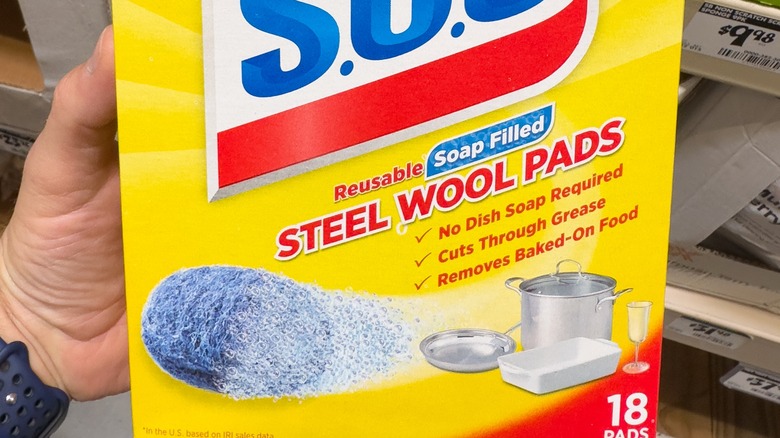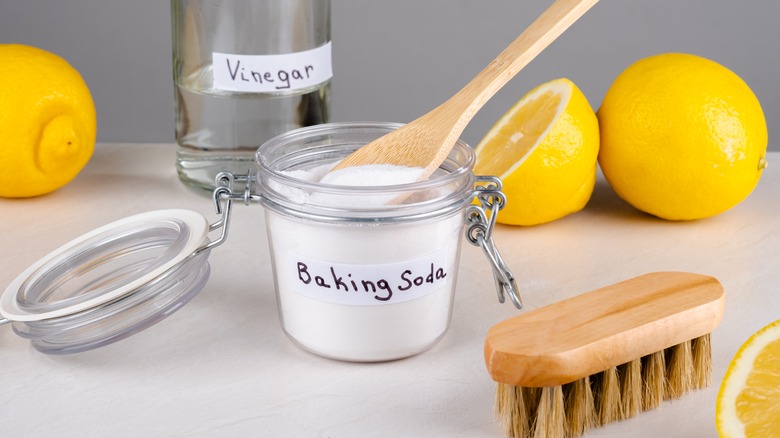Cleaning Ingredients To Avoid Using On Porcelain Countertops (& What To Use Instead)
We may receive a commission on purchases made from links.
If you're in love with your porcelain countertop, you probably have an eye for trendy stuff. Porcelain countertops are currently the in-thing. Among all the countertop materials in the world, including quartz, porcelain countertops' popularity are expected to grow the fastest through 2028. You think it's a fad? Probably not. Trust the average consumer to know a good thing when they see one. People love porcelain countertops because they are durability champs (they are harder than granite), look classy and elegant, and can mimic several types of flooring material, whether wood, marble, even bamboo.
That said, while porcelain countertops hold up well against stains, mainly because they are non-porous, staining is not entirely off the cards. The trick is to know how to clean porcelain tiles and countertops — including what to avoid. For example, while you can safely use bleach to clean white porcelain, it's a bad idea to clean colored or vintage porcelain using bleach as it can easily damage the finish and leave it looking worse off. Chlorine bleach is particularly bad because it weakens the cement that binds the grout, thereby reducing its lifespan. Chances are, you also don't enjoy the smell of chlorine bleach. So, here's what ingredients you should avoid using — and what to use instead.
Other cleaning ingredients to avoid using on porcelain countertops
Chlorine bleach isn't the only ingredient to avoid using on porcelain countertops. Other abrasive cleaners, including ammonia-based solutions, can also harm your porcelain countertop, although ammonia-based solutions have several uses in the home. The list of abrasive materials to avoid should include steel wool. Other than leaving metal traces that will waste your time cleaning again, tiny steel wool particles can create rust stains, especially in the grout, when not washed out properly. Needless to say, steel wool can also scratch the glossy finish and leave tiny crevices that'll make future cleaning more difficult.
How about lemon juice or vinegar? Although either can work, prolonged exposure to lemon juice or vinegar can etch the porcelain finish. Because of this, you'll be dealing with more difficult stains a couple of months down the road. Remember, though weaker, citric acid (lemon juice) and acetic acids (vinegar) are still acids and, hence, can corrode. Does this mean there's nothing else to use? Far from it.
Cleaning ingredients to use on porcelain countertops
It's a good rule of thumb to strictly use gentle ingredients to clean porcelain countertops. Stick to products with a neutral PH — like good, old dish soap and water. When using soap and water, make sure the water is warm, never hot, and use a mild soap and a soft sponge. That said, some other alternatives work just as well, including powdered Bar Keepers Friend. But there's a caveat: don't apply Bar Keepers Friend directly to the porcelain. Instead, squeeze bits of it on a damp cloth and use the cloth to wipe your countertop surface.
Vinegar or lemon juice should do a good job, but as already mentioned, they shouldn't be used for an extended period. Also, after using vinegar or lemon juice, remember to rinse well with water. If you've been in the kitchen-cleaning business for long, you already know there are clever ways to use baking soda for a cleaner kitchen. Put some powder on a damp sponge — or apply directly on the stain and scrub. Looking for something more potent? Try hydrogen peroxide, even at the concentrations on the bottle. Layer your countertop with paper towels, spray hydrogen peroxide on the layered surface, and let it sit for between 30 and 60 minutes before rinsing. Your porcelain countertop will look clean and sparkling.


